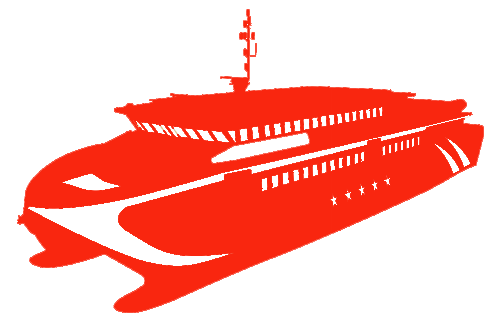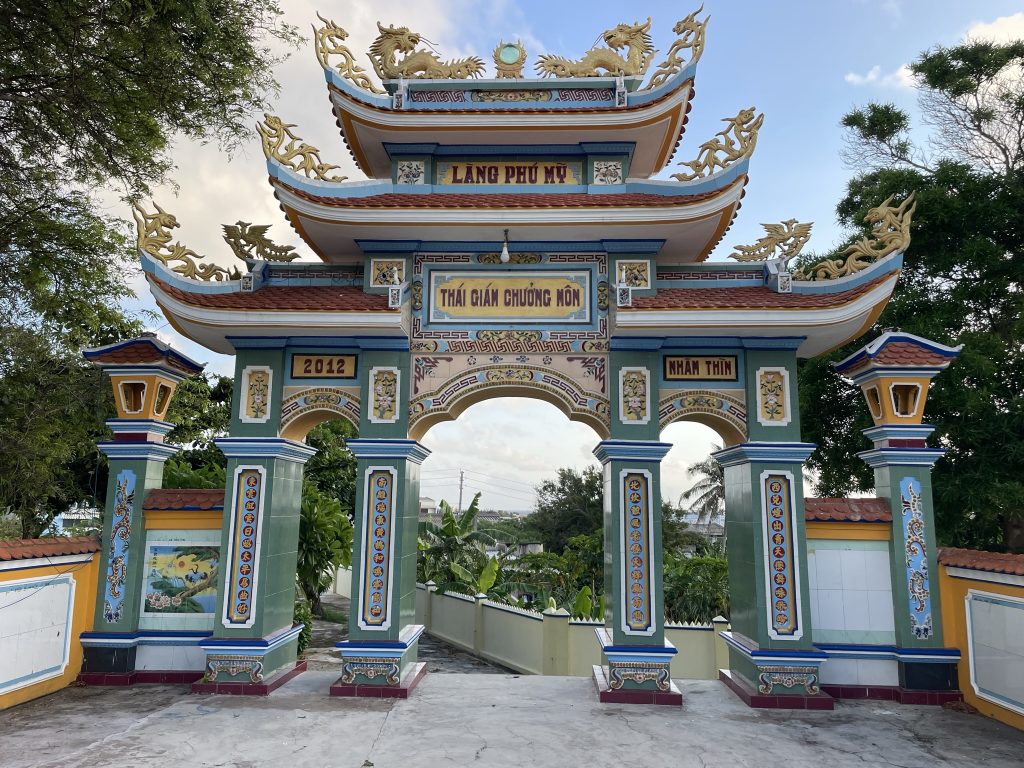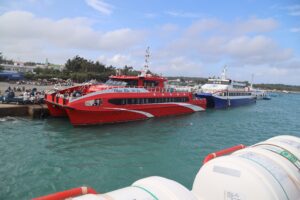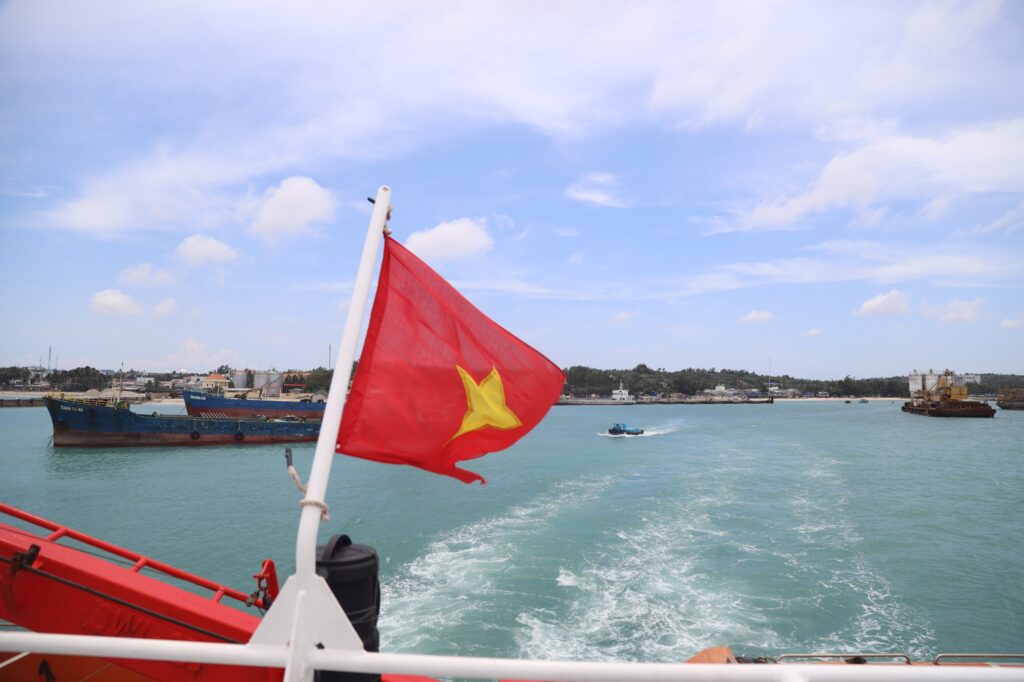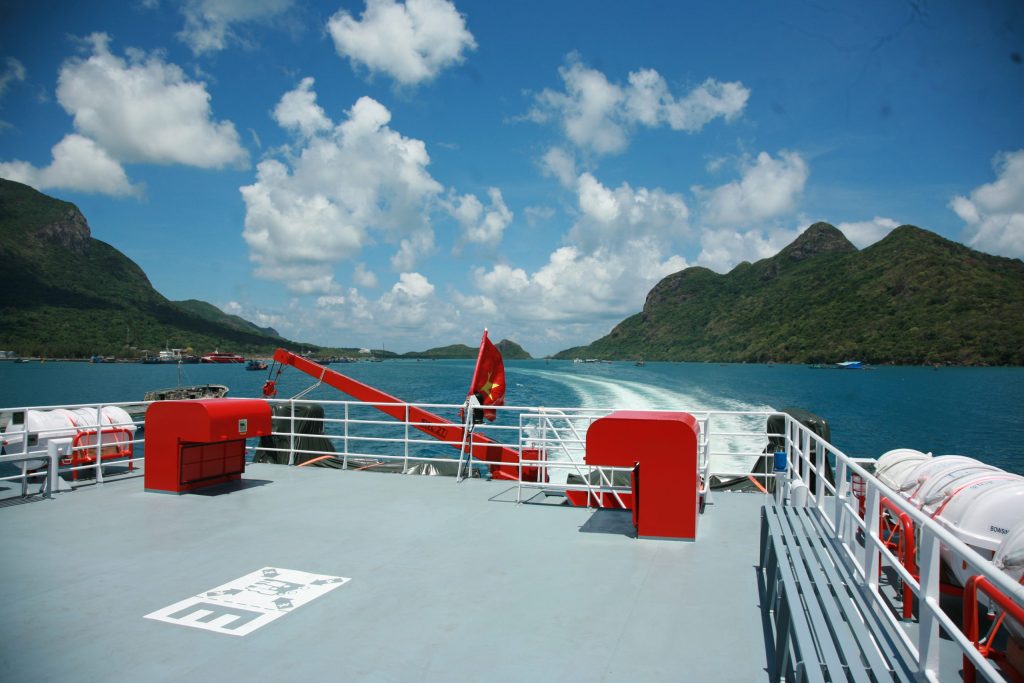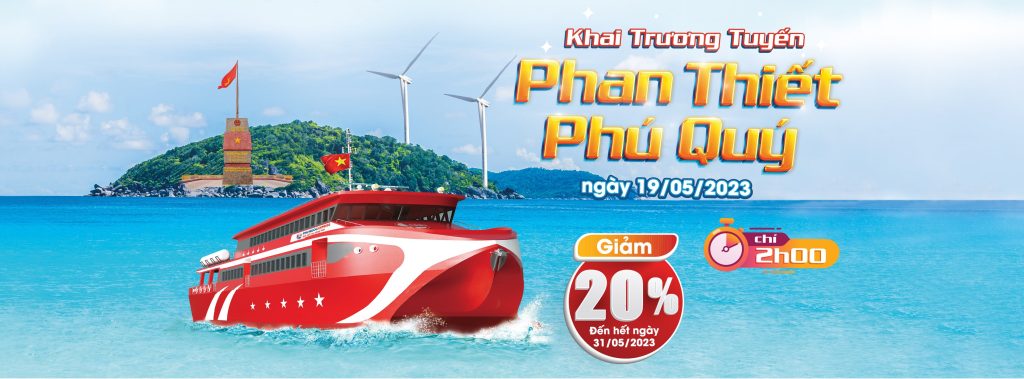The belief in Bạch Mã Thái Giám centers on the worship of a deity who protects merchants and trade. This commercial-oriented faith reflects the historical role of trade in the lives of the people of Phú Quý. Even today, the local community continues to respectfully maintain this tradition. In regions with bustling ports and trading activities, this deity is commonly venerated. For example, in Hội An, there are still 12 villages that honor Bạch Mã Thái Giám, with official royal decrees from past emperors. In Phú Quý, there are two temples dedicated to this deity, both located in Ngũ Phụng Commune.
Although the number of temples dedicated to Bạch Mã Thái Giám is fewer compared to other popular beliefs such as Ông Nam Hải or Bà Chúa Ngọc, the people of An Hòa and Quý Thạnh villages in Ngũ Phụng Commune still hold solemn annual ceremonies to honor the deity in the first and tenth lunar months. Every two years, a traditional opera (hát bội) is performed during the festival, creating a vibrant and deeply communal atmosphere.
Bạch Mã Thái Giám became known as the protector of maritime merchants through a legendary Indian tale about the divine horse Balaha. According to the story, 800 merchants were once lost at sea and landed on an island inhabited by cannibalistic women. Because the men were young and strong, the women did not kill them but instead forced them to marry and live on the island, never to return home.
Longing for their homeland, the merchants prayed to the Buddha for rescue. The Buddha, moved by their pleas, transformed into a divine horse and flew them across the sea on the condition that they not look back or long for anything left behind on the island.
However, many of the merchants missed their wives and children and turned back to look. As a result, they all fell into the sea. Only one man obeyed the Buddha’s instructions and survived, eventually returning to his homeland and later becoming a king of India.
According to Buddhist belief, Avalokiteshvara (Guanyin Bodhisattva) manifests in many forms, one of which is Mã Đầu La Sát — a horse-headed figure. Cultural researcher Huỳnh Ngọc Trảng notes that this deity, Mã Đầu La Sát, is considered a manifestation of Guanyin, who transcends gender. A distinctive feature of Avalokiteshvara in Mahayana Buddhism is the ability to appear as either male or female, depending on the needs of sentient beings.
Thus, “Bạch Mã” refers to the White Horse deity, while the title “Thái Giám” (Eunuch) symbolizes the deity’s gender-neutral manifestation, as interpreted by local folk belief. Under the Nguyễn Dynasty, this deity was conferred the title “Dương Uy Ngự Vũ Bảo Chướng Kiện Thuận Hòa Nhu Hàm Quang Thượng Đẳng Thần.” On Phú Quý Island, Bạch Mã Thái Giám is revered in local temples, where annual rituals are held to express devotion and pray for protection, prosperity in business, good health, and peace for the islanders.
In addition to agriculture—which was later overtaken by the fishing industry—Phú Quý’s economy was also marked by handicrafts and trade, which helped put the island on the map. The island’s soil was particularly suitable for plants like mulberry, cotton, wild pineapple (dứa gai), and high-yield peanuts. These conditions supported traditional crafts such as mulberry cultivation and silk weaving. During the feudal era, locals produced a type of cloth called vải bạch bố, which was even used to pay taxes to the imperial court.
Other traditional crafts included weaving hammocks from wild pineapple fiber, basketry, and peanut oil pressing—all of which produced goods highly valued on the mainland. These trades developed a thriving commercial network that extended to cities like Phan Rang and Đà Lạt. Although many of these crafts have now faded or disappeared due to shifting market demands and the rise of the fishing industry, they once played a vital role in the island’s economy.
This history of trade and craftsmanship explains the presence of commercial guardian deities on the island, such as Bạch Mã Thái Giám and Thầy Sài Nại, both regarded as protectors of merchants and commerce.


